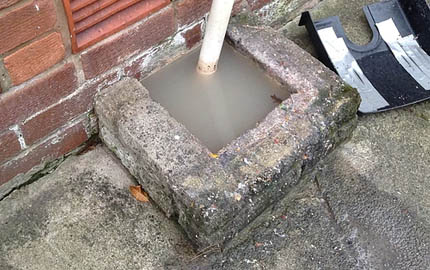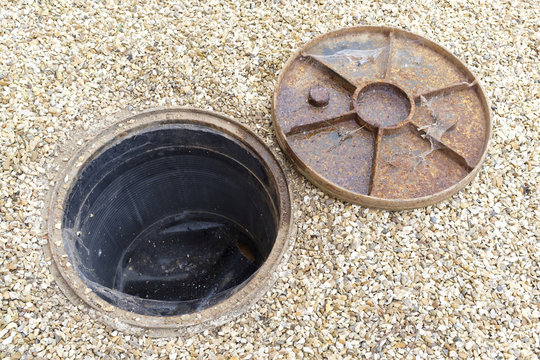Procedures to Implement for Clearing a Blocked Drain Prior to Calling Expert Help
Procedures to Implement for Clearing a Blocked Drain Prior to Calling Expert Help
Blog Article
What are your thoughts with regards to 8 Tips For Clearing A Blocked Drain?

Intro
Dealing with a blocked drainpipe can be a discouraging experience, disrupting day-to-day activities and potentially creating damages to your home. However, before connecting to plumbing professionals, there are actions you can take to attend to the issue on your own. In this guide, we'll explore DIY remedies and preventive measures to take on an obstructed drain successfully.
Identifying the Issue
The primary step in attending to an obstructed drainpipe is identifying the indications. Slow-moving water drainage, gurgling noises, foul odors originating from drains, or water support up prevail signs of an obstructed drainpipe. Determining these indicators early can assist avoid even more issues.
Common Root Causes Of Blocked Drainpipes
Recognizing the aspects that add to drain pipes blockages is necessary for efficient resolution. Common culprits consist of hair, soap residue, oil, food debris, and international things like sanitary items or paper towels. Tree roots invading underground pipelines can additionally trigger substantial blockages.
Do it yourself Solutions
For small blockages, a number of do it yourself solutions can be effective. Pouring boiling water down the drain can aid liquify oil and particles. Baking soda and vinegar or a mix of salt and cooking soda can function as all-natural cleansers. Utilizing a plunger or pipes serpent to dislodge obstructions is another option.
Devices and Devices
Having the right devices accessible can make do it yourself drainpipe cleaning up extra efficient. A plunger is a flexible tool for removing clogs in sinks, commodes, and showers. A plumbing serpent or auger can reach deeper blockages, while drainpipe cleansing chemicals can be utilized very carefully for persistent obstructions.
Safety nets
To prevent future obstructions, adopting preventive measures is important. Mount drain guards or strainers to capture hair and debris prior to they get in the pipelines. Regularly flush drains with hot water to liquify oil buildup, and stay clear of dealing with oil or solid waste down the drain.
When to Call an Expert
While DIY solutions can solve small obstructions, certain indicators indicate the need for specialist assistance. Persistent clogs, foul odors regardless of cleaning up efforts, or multiple drains pipes backing up all at once are warnings that warrant expert intervention.
Picking the Right Plumbing Solution
When selecting a pipes service, consider aspects such as experience, licensing, and customer reviews. Select a reputable plumbing with a performance history of high quality workmanship and clear rates practices.
Cost Factors to consider
The cost of professional drainpipe cleaning company can vary depending on the seriousness of the clog and the plumbing's prices. Request quotes from numerous companies and ask about any type of additional charges to guarantee openness and stay clear of surprises.
Security Precautions
When attempting do it yourself drain cleansing, focus on safety. Put on safety gloves and eyeglasses to avoid contact with hazardous chemicals or bacteria. Never blend various drain cleansing items, as this can produce hazardous fumes.
Situation Studies
Real-life instances illustrate the performance of do it yourself options and the relevance of timely expert intervention in fixing drain blockages.
Conclusion
By adhering to the tips described in this guide, you can properly deal with blocked drains and stop future plumbing issues. Whether going with do it yourself services or looking for specialist aid, timely action is essential to maintaining a healthy and balanced pipes system and protecting the stability of your home.
How to Clear a Clogged Drain Yourself (And When to Call In the Professionals)
What Can Clog a Drain
Dirt Skin flakes Hair Grease Soap scum Food Offset pipes Tree roots Small objects Mineral buildup DIY Tricks to Unclog a Drain
You can fix this! Once you have identified the source of the clog (or have a vague idea), you can try one or a combination of these fixes in order to clear your plumbing.
Wire Hanger or Snake
Untangle and clear out hair from a drainpipe with a homemade snake. Use a straightened-out wire hanger with a 90-degree angle hook to locate the clog and drag out any unwanted material.
Remember not to push the clog further down to where the wire hanger cannot reach! If you need to follow up with a plunger, give it a try. Your efforts might be more successful after it’s been wire-snaked.
If you want to get fancy and don’t have a wire hanger to spare, head to the store and pick up a hand-operated drain snake. You can get one for $10-$30. It may save you the hassle, and provide additional length to reach deep into the clogged pipe.
Plunger
A cup plunger has a suction cup attached to a wooden handle. The rubber creates a seal around the drain, and increases the pressure force of the plunger.
Plunge for 30-second increments to loosen the clog. This may need to be repeated over the course of 15-20 minutes. Once plunged, run the water to flush the remaining material out of the drain.
Remember– never use a plunger if you have used a chemical drain cleaner. These chemicals can splash up from the force of the plunger and cause serious injury or burns.
Boiling Water
Hot water can sometimes break up materials into a flushable amount. Dirt, grease, and soap buildup requires heat in order to unstick from surfaces.
Take your kitchen kettle and heat your water to a boil. Once it reaches a rolling boil, pour it directly down the drain into the blockage. Carefully follow with plunging, if necessary.
Don’t worry if this takes more than one try! It can often take multiple kettles and repeated plunging in order to clear a particularly stubborn clog.
Chemical Drain Cleaner
As a last resort, pick up a bottle of chemical drain cleaner. Drain-cleaning chemicals are potent, and not very good for the environment.
You may need to wear protective eyewear in gloves before handling your bottle of chemical drain cleaner. Follow the instructions printed on the bottle, and flush with water as soon as the instructions allow. Do not follow with plunging.
Baking Soda and Vinegar
As a safer alternative to chemical drain cleaner, baking soda and vinegar can create a chemical reaction that clears tough clogs.
Combine one cup of cleaning vinegar with one cup of boiling water, and set aside. Once you have done this, pour half a cup of baking soda down the drain. Give the baking thirty seconds to settle and cover a large portion of the problem drain.
Following the baking soda, pour down your vinegar and hot water solution. Once the vinegar and baking soda combine, the mixture will bubble and fix. Let this reaction fizzle in the drain for about an hour.
After an hour, follow with a kettle’s worth of hot water. The heat and liquid should flush out any remaining material.
When to Call a Plumber
If your DIY attempts haven’t cleared your clog drain, it’s time to call in a professional. It’s not worth losing access to your kitchen sink or high-traffic bathroom. A clog in a vital area can keep you from the things you’d rather be doing, and derail your routine.
Anytime a clog is causing water to spread is a time to call in a plumbing service. What starts out as a little bit of water can quickly grow into serious, expensive water damage.
Additionally, a serious clog can result in burst pipes or serious leaks. Make sure you know when to take it seriously!
https://myguysnow.com/how-to-clear-a-clogged-drain-yourself-and-when-to-call-in-the-professionals/

I was introduced to that editorial about 8 Tips For Clearing A Blocked Drain through a buddy on our other site. Sharing is nice. Helping people is fun. Thanks a lot for your time. Please stop by our website back soon.
Call Report this page